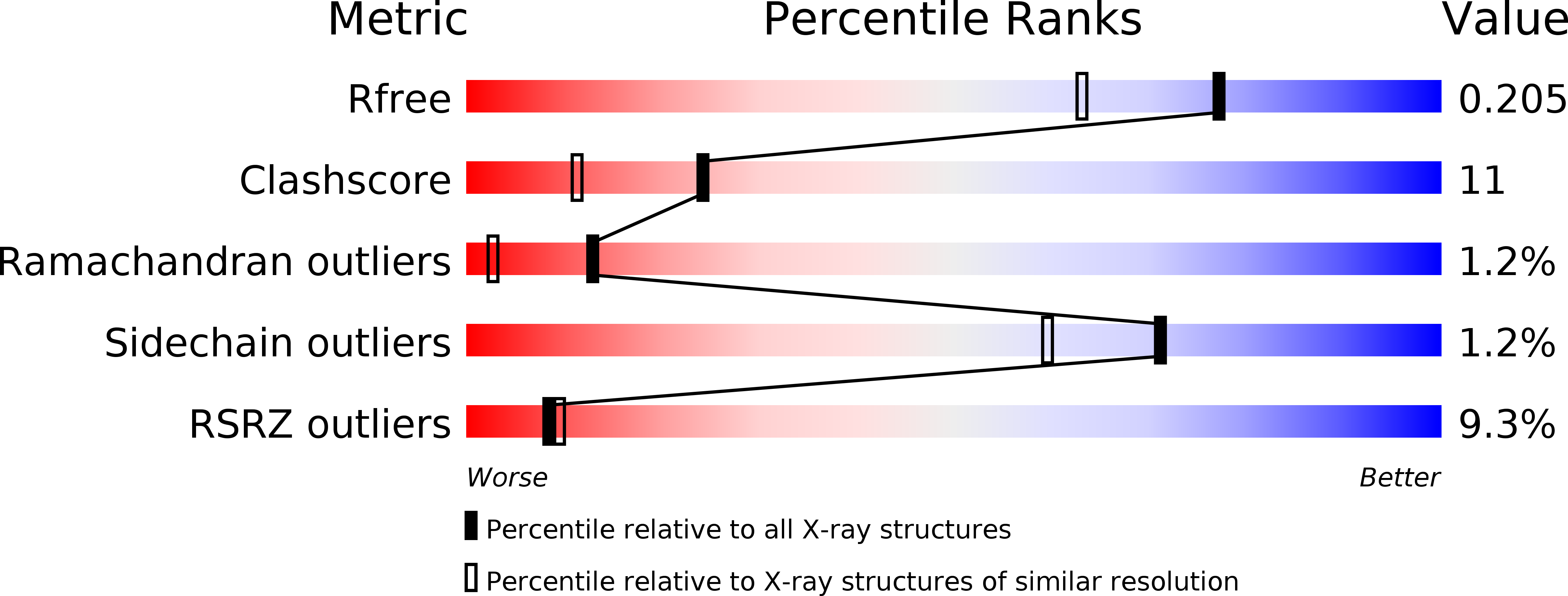Structure of Chlorobium tepidum sepiapterin reductase complex reveals the novel substrate binding mode for stereospecific production of L-threo-tetrahydrobiopterin
Supangat, S., Seo, K.H., Choi, Y.K., Park, Y.S., Son, D., Han, C.D., Lee, K.H.(2006) J Biol Chem 281: 2249-2256
- PubMed: 16308317
- DOI: https://doi.org/10.1074/jbc.M509343200
- Primary Citation of Related Structures:
2BD0 - PubMed Abstract:
Sepiapterin reductase (SR) is involved in the last step of tetrahydrobiopterin (BH(4)) biosynthesis by reducing the di-keto group of 6-pyruvoyl tetrahydropterin. Chlorobium tepidum SR (cSR) generates a distinct BH(4) product, L-threo-BH(4) (6R-(1'S,2'S)-5,6,7,8-BH(4)), whereas animal enzymes produce L-erythro-BH(4) (6R-(1'R,2'S)-5,6,7,8-BH(4)) although it has high amino acid sequence similarities to the other animal enzymes. To elucidate the structural basis for the different reaction stereospecificities, we have determined the three-dimensional structures of cSR alone and complexed with NADP and sepiapterin at 2.1 and 1.7 A resolution, respectively. The overall folding of the cSR, the binding site for the cofactor NADP(H), and the positions of active site residues were quite similar to the mouse and the human SR. However, significant differences were found in the substrate binding region of the cSR. In comparison to the mouse SR complex, the sepiapterin in the cSR is rotated about 180 degrees around the active site and bound between two aromatic side chains of Trp-196 and Phe-99 so that its pterin ring is shifted to the opposite side, but its side chain position is not changed. The swiveled sepiapterin binding results in the conversion of the side chain configuration, exposing the opposite face for hydride transfer from NADPH. The different sepiapterin binding mode within the conserved catalytic architecture presents a novel strategy of switching the reaction stereospecificities in the same protein fold.
Organizational Affiliation:
Division of Applied Life Science, Environmental Biotechnology National Core Research Center, Gyeongsang National University, Jinju 660-701, Korea.
















